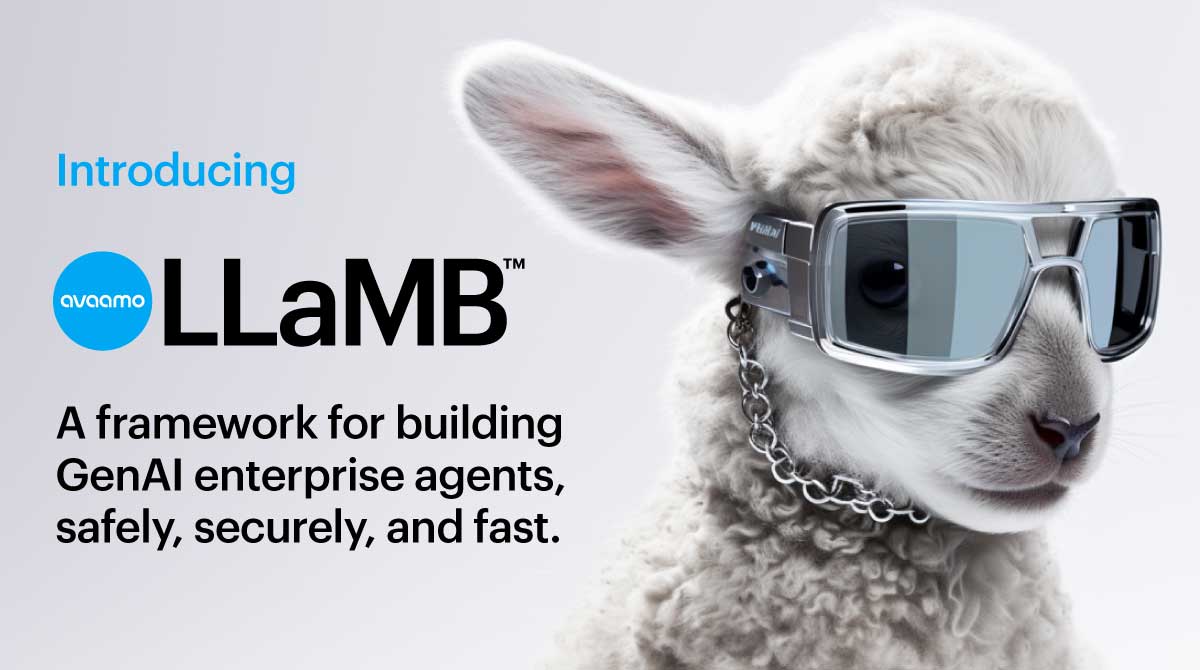
26 Feb Generative AI Implementation: The Challenges Beyond the LLM API in the Enterprise
The Easy Part: LLM API. The Hard Part: Everything Else…
Developers and corporate executives have been led to believe that securing an LLM API from the emerging set of providers is all that’s needed to deliver enterprise-wide transformation; “If all you have is a hammer, everything looks like a nail.” However, relying solely on this approach can lead to challenges. Conducting proof-of-concepts (POCs) with minimal documentation and testing on a local host has become a common trend. But transitioning such experiments to a production application at scale proves to be significantly challenging with current tools. It is with this in mind that Avaamo has launched LLaMB.
What customers told us
Three major challenges our customers have identified are:
1. Fragmented toolkit landscape:
After acquiring an API, customers found themselves confused about which tools to use for managing compliance, toxicity, data privacy, and hallucinations—new terms introduced when developing Generative AI-driven applications.
2. Lack of AI skills:
Developers lacking proficiency in new toolkits faced frequent changes, adjustments, testing, and recalibrating. This resulted in even simple Generative AI projects taking months to develop.
3. Integrating with current workflows:
Projects faced hurdles in seamless integration into existing enterprise workflows and managing inputs and outputs. Consequently, projects devolved into mere summarizations, leading CIOs to question their value.
Why Did We Develop LLaMB?
Recognizing the challenges inherent in working with natural language interfaces, we saw the need for a new framework. Our aim was to simplify the process into a low-code solution, making it easy for customers to build and deploy generative AI applications quickly, securely, and with ease.
What is LLaMB?
LLaMB™ stands as a groundbreaking low-code framework designed to facilitate the creation of robust end-user generative AI Agents within the enterprise. It offers tools to eradicate hallucinations, seamlessly integrate with enterprise systems, and support the large language model (LLM) of your choice.
Trust: data integration, privacy, and compliance
Our security-first architecture, drawing on our extensive expertise, ensures:
1. A guarantee of zero retention.
2. Elimination of hallucinations, as LLaMB ensures grounding solely in enterprise data.
3. Access to thousands of out-of-the-box connectors, providing prebuilt connections to any data source.
Exhitbit 1
How LLaMB delivers, safely and securely
Trust: going beyond
Off-the-shelf models like ChatGPT 4 or Bard can confidently produce incorrect answers, making it challenging for non-subject matter experts to identify flaws. This inconsistency renders open-model generative AI unreliable at best and catastrophic at worst. In a business setting, responses must be not only understandable and directionally correct but also precise in their nuance.
For instance, while it’s feasible to summarize a travel policy, summarizing and editing an FDA warning or a lending disclosure requires a deeper understanding. Generating an accurate answer entails comprehending an organization’s intricacies, policies, and language. This necessitates training the AI within that domain and fine-tuning it accordingly.
An AI Travel Advisor built with LLaMB
Transparency is another crucial aspect of trust. The origin of any generated answer should be transparent: the creator, date, context of creation, and adherence to data governance policies. Multiple citations are necessary to establish trust.
How LLaMB addresses this
LLaMB™ incorporates a pre-tuned layer with thousands of datasets relevant to support tickets, HR requests, and customer service queries. It provides a ready-to-use toolkit for initiating LLM application development in these specific domains. Moreover, LLaMB™ ensures trust throughout the user experience by attributing the source, often multiple sources, from the enterprise corpus to provide the user with the “context of the answer.”
Enterprise role permissions
No company would (or should) unleash an open-model LLM on its company’s information without ensuring that users only see permitted answers. Determining who sees what is a critical baseline in enterprise settings. LLAMB seamlessly integrates into existing identity frameworks to ensure that this principle extends to the answers as well.
Summary
As outlined above, building LLM-powered applications entails more than just the model itself. Various factors must be considered to develop and scale production applications. Our objective with LLaMB™ is to enhance the experience and efficiency of building LLM applications by providing an effective toolkit for everything beyond the LLM API. LLaMB™ simplifies the process of building, deploying, and maintaining LLM applications safely and efficiently.



